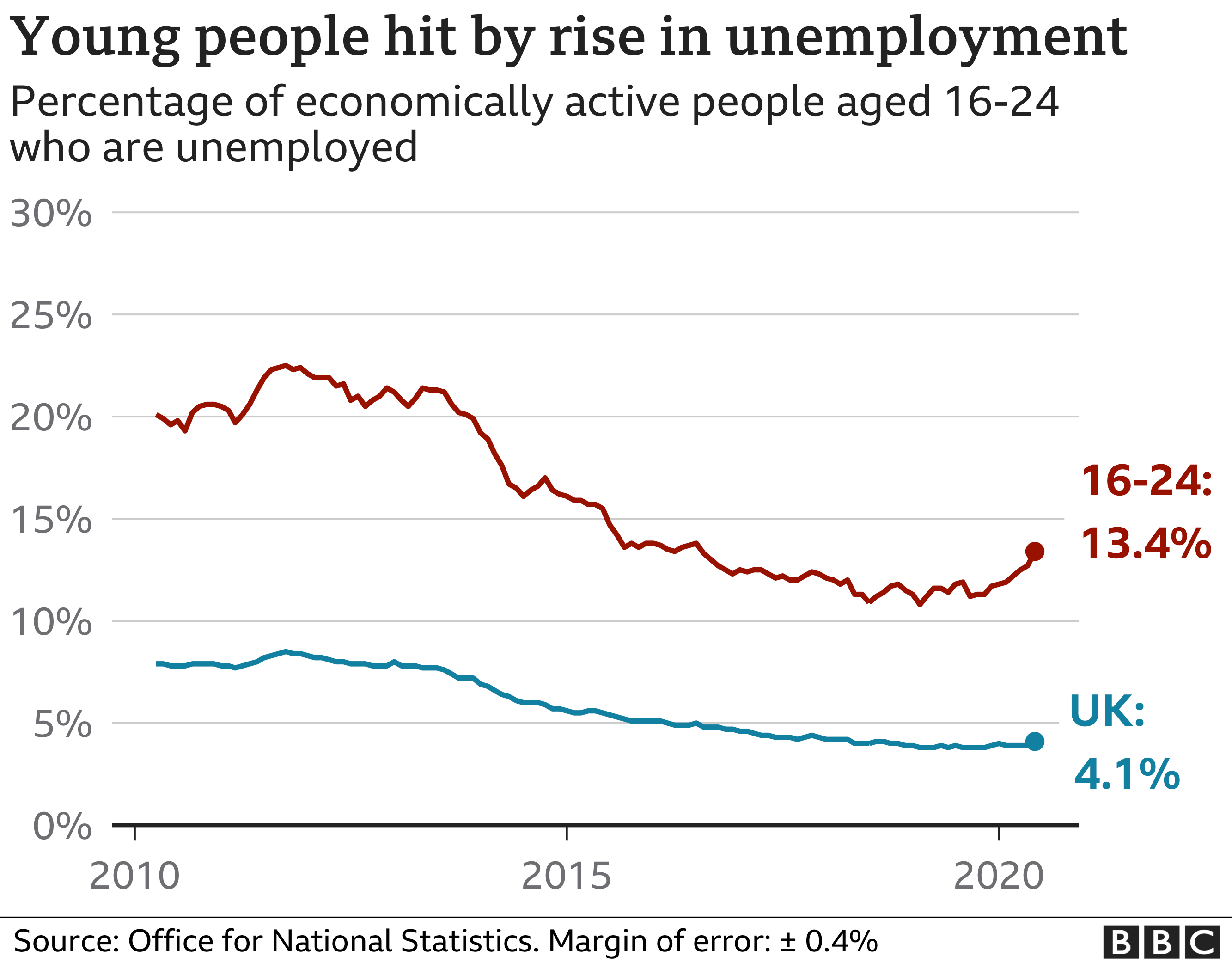
“There has been a growth of 4.1% of unemployment in the three months to July and whilst this is not entirely unexpected it is worrying that young people between the ages of 16-24 have been hit by the rise in unemployment the most. Their growth comes to 13.4% which is way beyond the national average.
The way that people need to improve their chances of obtaining employment is to create an appealing online profile to encourage companies to hire. People have to be prepared to retrain if necessary. There are firms who are hiring and the online sector is doing well.”
Nigel Holland
BBC article
The UK unemployment rate has risen to its highest level for two years, official figures show.
The unemployment rate grew to 4.1% in the three months to July, compared with 3.9% previously.
Young people were particularly hard hit, with those aged 16 to 24 suffering the biggest drop in employment compared with other age groups.
Firms continue to remove staff from payrolls as they prepare for the end of the government’s furlough scheme.
There were 156,000 fewer young people in employment in the three months to July compared to the previous quarter, according to new data.
Some 695,000 UK workers have disappeared from the payrolls of British companies since March, when the coronavirus lockdown began.
The government’s Job Retention Scheme will begin tapering off next month before ending on 31 October.
Under the scheme – which has seen 9.6 million people furloughed – the government initially paid 80% of a person’s wages up to £2,500 a month.
Since the start of September, the state’s contribution has fallen to 70%, with employers expected to make up the remainder of pay before the scheme ends on 31 October.
Despite calls for it to be renewed, Chancellor Rishi Sunak has ruled out extending the scheme past the end of next month.

ONS director of economic statistics Darren Morgan said that there had been some signs that the economy “reopened” in July as businesses including restaurants, pubs and hairdressers were allowed to trade again.
“Nonetheless, with the number of employees on the payroll down again in August and both unemployment and redundancies sharply up in July, it is clear that coronavirus is still having a big impact on the world of work,” he said.
Paul Dales, chief UK economist at Capital Economics research group, said he expected “employment will fall more sharply and unemployment will increase more quickly as the furlough scheme continues to unwind and ceases at the end of October”.


Unfortunately, this is the start of the official unemployment numbers starting to go up, just ahead of the furlough scheme being phased out.
While the headline unemployment rate went up to 4.1%, this is still low by historic and international standards.
Digging a little deeper, however, shows a more considerable increase of 0.5% to 4.4% solely in July. And in the final week of July, it increased to 4.8%.
This is the start of what economists and academics expect will be a sustained rise. The good news for now is that so far, the vast bulk of previously furloughed workers appear to have gone back to their jobs.
The other very notable feature is that the overall three-month average rise in unemployment, while still small, was in large part the result of young people losing their jobs.
Redundancies also went up to their highest level since the aftermath of the financial crisis. Employment remained at a record, however, and hours worked and vacancies showed a small recovery from massive falls during lockdown.
So the climb has started slowly, but the concern now is, where exactly does this go?
